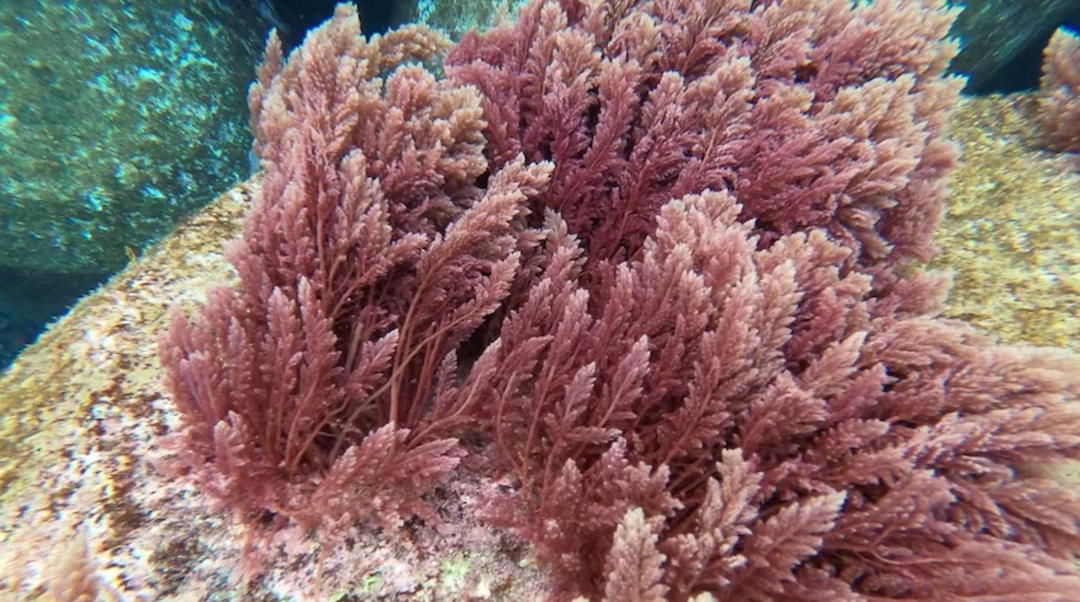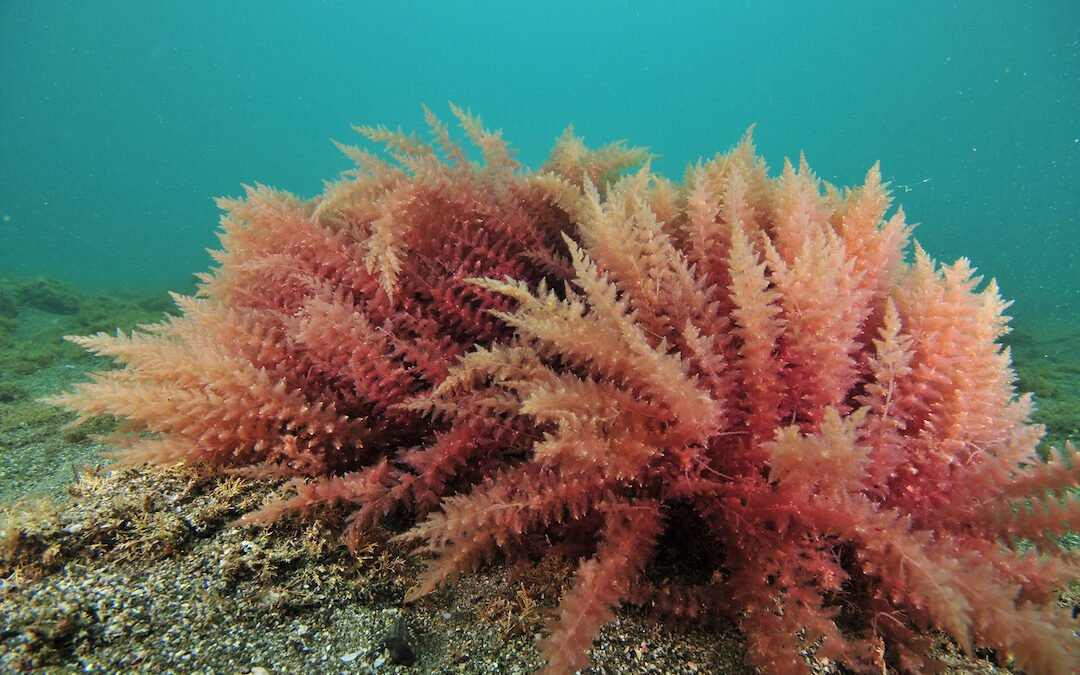Red seaweed could help limit the environmental impact of cows.
A recent study has found that feeding cattle red seaweed could reduce their methane emissions. Published in the international journal Animal Feed Science and Technology, it suggested dairy farmers could reduce their carbon footprint through a simple change in their livestock feed. And it is already having implications in the Australian market.

A study in red
In order to test whether methane emissions could really be reduced, scientists poured canola oil infused with a native red seaweed, called Asparagopsis Armata, over cow feedlots. The results were better than they could have hoped. While the new feed had no impact on the quality of milk, it did limit the emissions of the animals. So, how does it work?
Asparagopsis seaweed is full of bromoform, a substance that stops hoofed animals from producing methane by inhibiting an enzyme in the gut. Several studies have been conducted over the past few years suggesting that this change in a cow’s diet can limit methane production by around 80 to 98 percent. In Australia, methane produced by livestock accounts for 10 percent of our total greenhouse gas emissions, mostly released when they burp. If a simple diet change could prevent this large output of gas into our environment, many are hopeful it could promote greener farming practices and protect our planet.

Red seaweed © FutureFeed
Food, glorious food
In 2020, the CSIRO partnered with Meat & Livestock Australia to produce a cost-effective seaweed feed called FutureFeed. Since then, it has received investment from several big brands, including supermarket chains that wish to fund ‘low emissions’ products.
According to Dr Rob Kinley, chief scientist for FutureFeed, the findings from the recent seaweed study have several implications for the company and wider industry.
“From a regulatory perspective, this study is the first of its kind using this product in the dairy industry.”
“It will allow for the sale and use of this product in dairy systems and dairy feeding markets, so that’s a first step on the road map to bringing this product to large-scale availability.”
If Asparagopsis seaweed can become part of the mainstream livestock diet, Australia could see significant environmental benefits surrounding our greenhouse gas emissions. Similarly, it could encourage companies to prioritise ‘low emission’ dairy products, creating space in the market for more environmentally conscious produce.

‘Low emissions’ dairy products could become the next big thing
Bigger and better
Already, Australia is adopting red seaweed into its farming practices, with many farmers encouraging the use of FutureFeed.
This includes Apostle Whey Cheese farmer Luke Benson. His farm undertook a 28-day trial using red seaweed in livestock feed, hoping to keep up with a changing market and the demands of an environmentally conscious age.
“We need to look into the future of farming, and with carbon emissions and the environment, we need to be proactive,” he says.
“If we keep farming the way we are, it might not necessarily be sustainable into the future. So, like every industry, we have to keep ahead of the times and look to the future.”
Aussies only need to wander down the supermarket aisles to notice several ‘low emissions’ products already hitting the shelves. And as companies like FutureFeed continue to develop, demand will only grow.
The recent study has given many hope that red seaweed will continue to increase in popularity, making for a healthier and greener planet.
To learn more about innovations in Australia’s dairy industry, click here.

